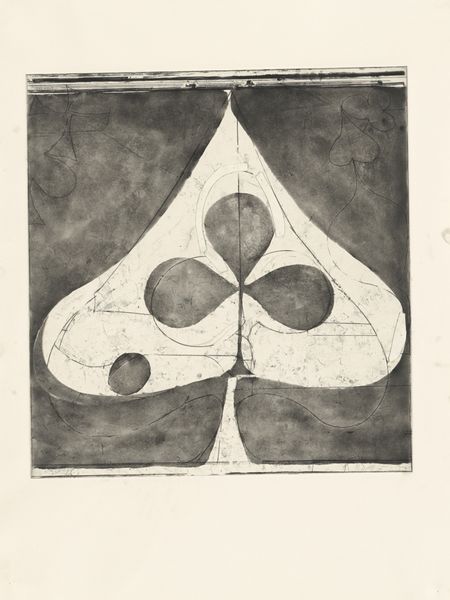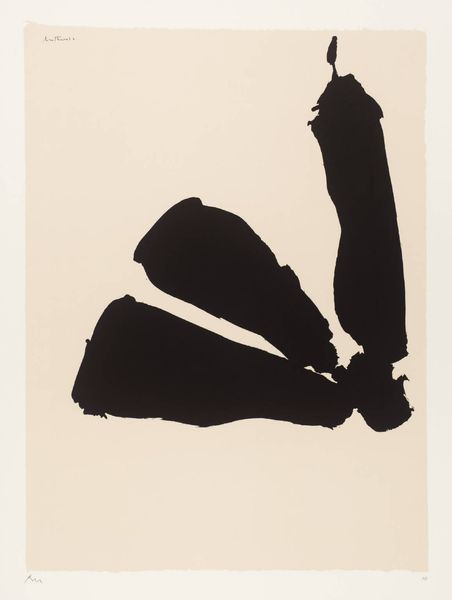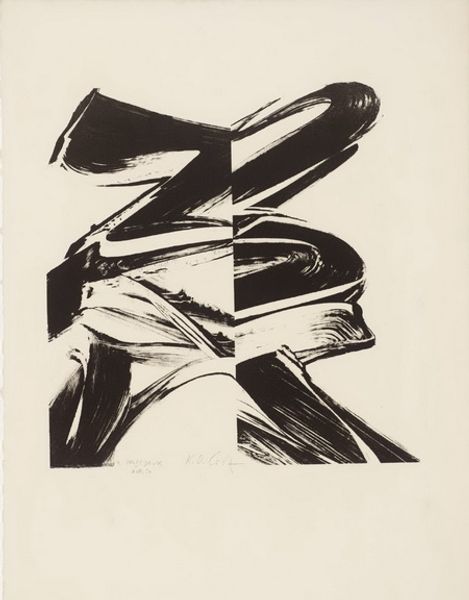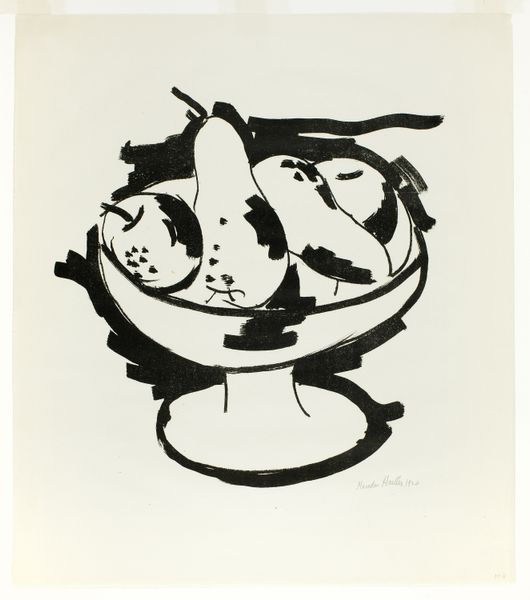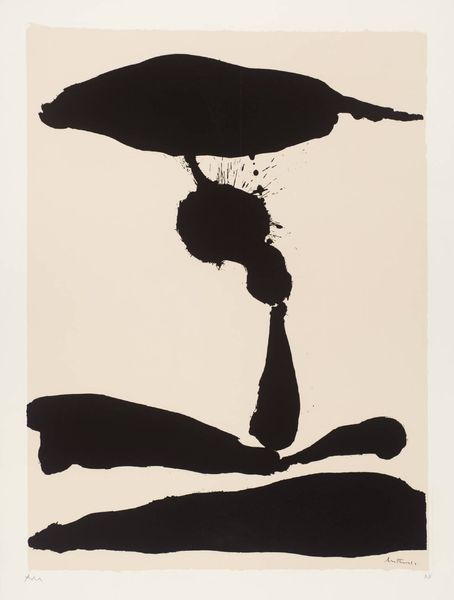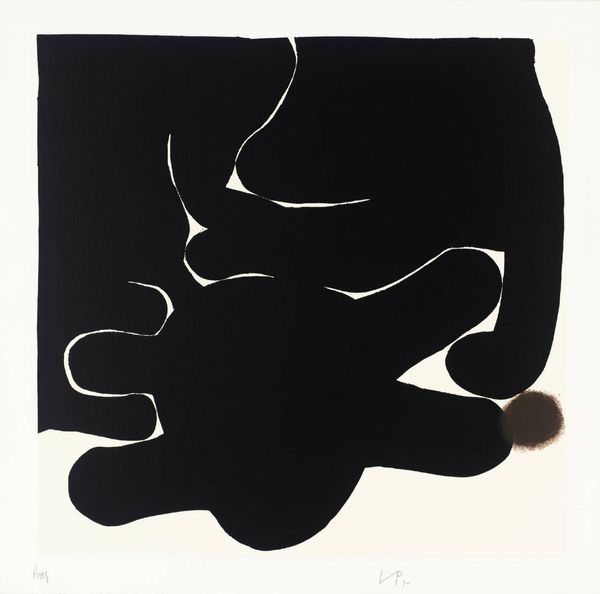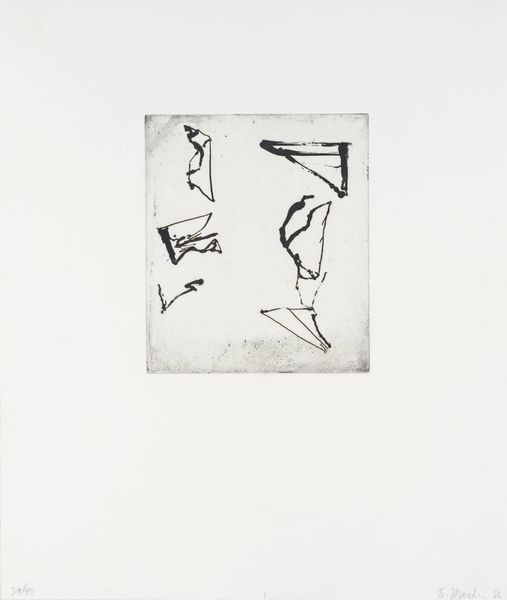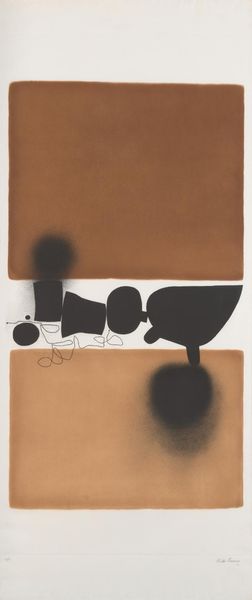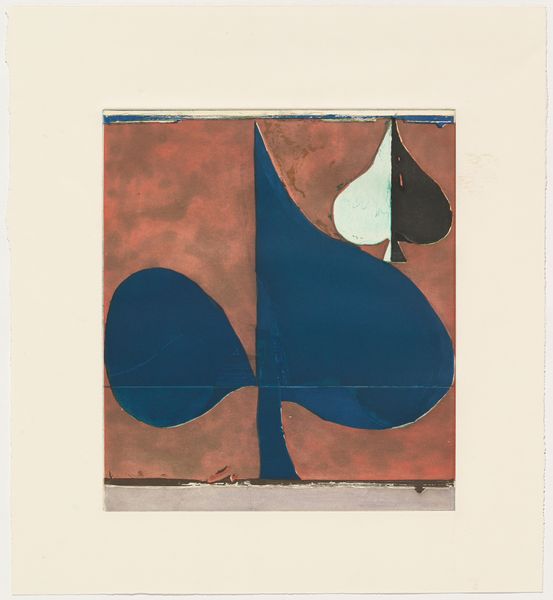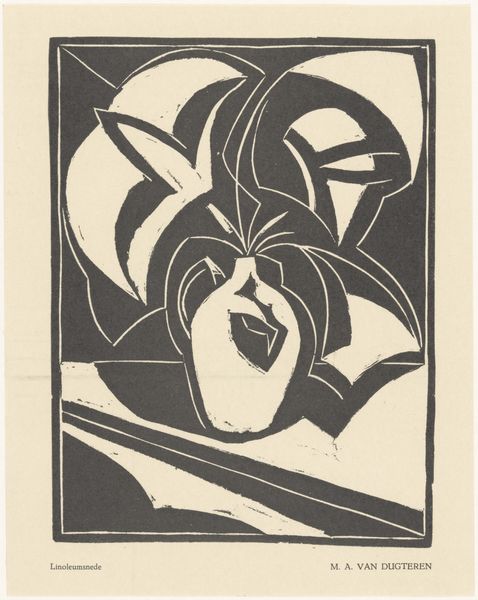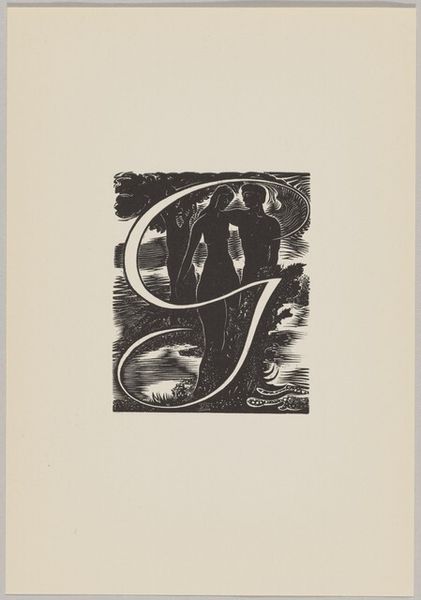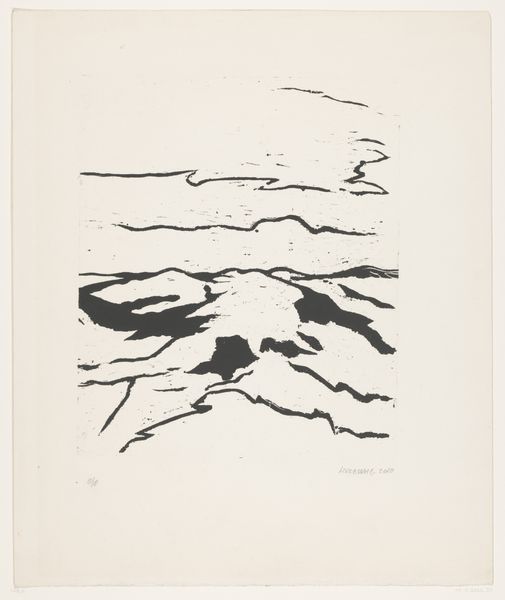
#
bay-area-figurative-movement
Dimensions: plate: 39.3 x 33.9 cm (15 1/2 x 13 3/8 in.) sheet: 64 x 55.4 cm (25 3/16 x 21 13/16 in.)
Copyright: National Gallery of Art: CC0 1.0
Editor: Here we have Richard Diebenkorn’s "Combination (working proof 15)" from 1981, a monotype print. The stark black and white and the recognizable geometric shapes of playing cards give it an immediate visual impact. What's your interpretation of this working proof? Curator: Well, first, it's vital to understand the means of its production. As a monotype, it's inherently about process; each print is unique, documenting a singular application of ink and pressure. Given that this is labeled "working proof", how does its status as a step towards something completed shift the conversation? Consider the labor involved – the careful inking, the press, and then the critical evaluation, and the intent for reproducibility. Editor: That's a good point about the "working proof" title, indicating process. But the abstraction seems like the complete opposite of that - wouldn't this eliminate the importance of playing cards’ meaning? Curator: Not entirely. Abstraction doesn’t necessarily eliminate meaning; rather it challenges us to locate meaning beyond direct representation. These shapes still carry a social weight, right? Playing cards, and what we associate with them – chance, leisure, even vice – have all gone through the assembly line of meaning. And don’t forget Diebenkorn’s earlier work; how does that history contribute to your understanding of what he is working towards here? The historical connotations remain, and his material choices create a push and pull. Editor: I never thought about it in that light. So, even an abstract piece is embedded within the materials and the historical journey? Curator: Absolutely. It’s through the artist’s labor and interaction with those materials that new meanings are formed, layered upon the old, through both creation and the history of the cultural weight it contains. It's exciting how meaning shifts over time in relation to the hand that created it and what its components are, even if we only see them represented by shapes and gestures. Editor: It is like uncovering a narrative through material and process, very interesting!
Comments
No comments
Be the first to comment and join the conversation on the ultimate creative platform.
